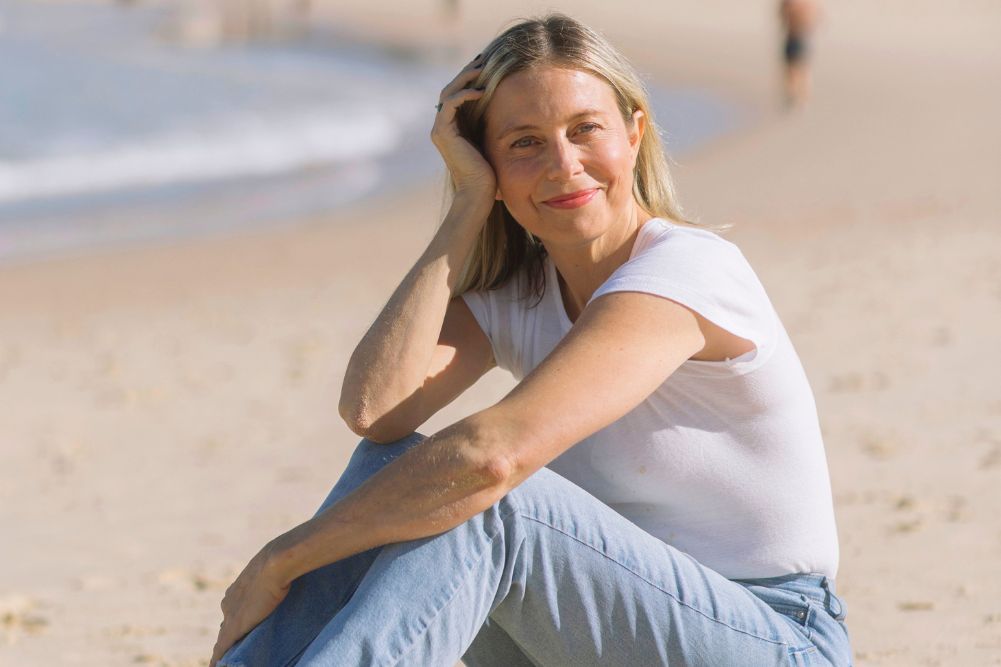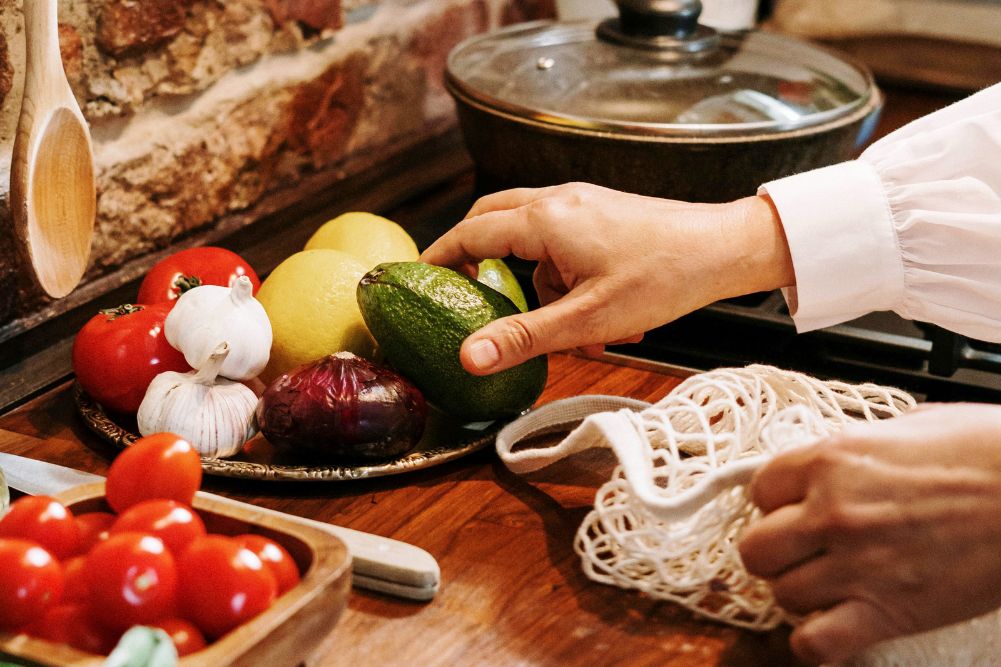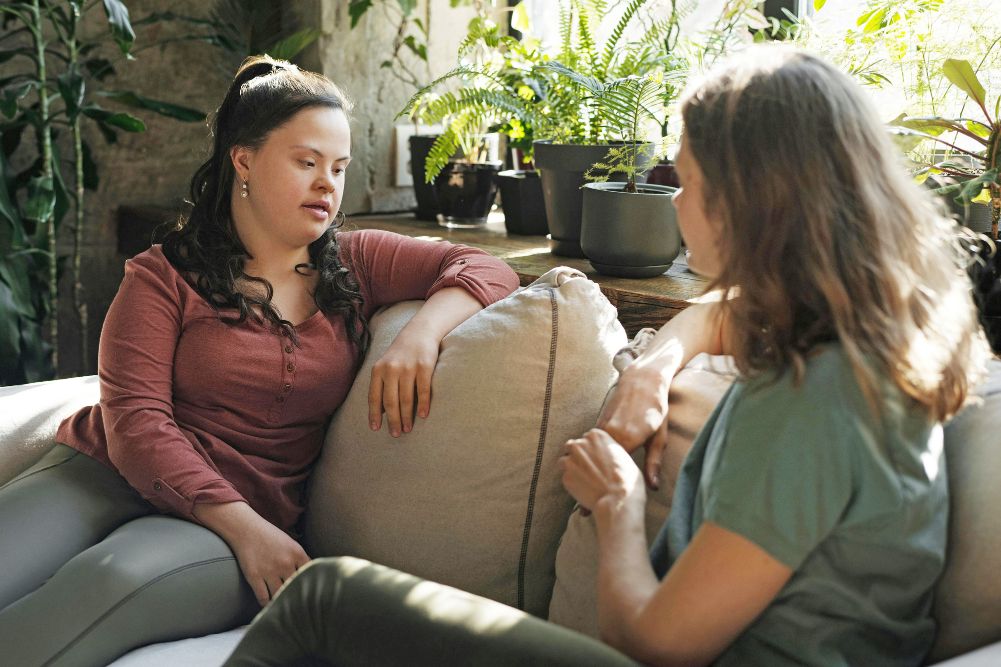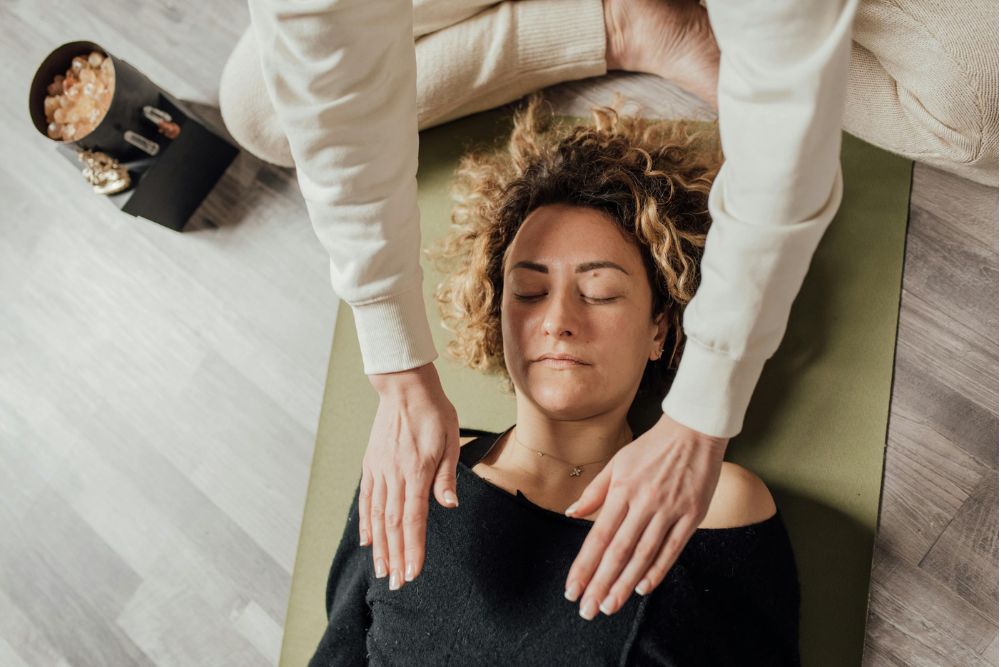Nurturing your inner ojas with home yoga
Nourish and rejuvenate your ojas with this restorative home yoga workout.
Given the way in which modern culture encourages — or demands — that we’re constantly productive and operating at full speed, it can be easy to forget that our physical, emotional and spiritual energy is finite.
This is why bringing our awareness to concepts such as Ayurveda’s ojas (often translated as “vigour”) into your home yoga practice is important. Ayurveda reminds us that the vigour we enjoy in life is not guaranteed, and that an unsustainable lifestyle affects us on the deepest level. The idea of ojas gives us the language and imagery to better understand our energetic needs and invites us to imagine that when we drain our energy, we’re actually draining one of our body’s most vital essences.
What is ojas?
In a nutshell, ojas is your ultimate health, vibrancy, immunity and longevity. It’s the thing that lights us up, gives us vitality, enables us to feel strong and helps us weather the storms of life. Sometimes referred to as the body’s natural honey, nectar or sap, ojas is imagined to be not just an abstract concept but an actual substance. In fact, it’s said to taste like honey, look like ghee and smell like roasted rice.
Along with prana and tejas, ojas is one of Ayurveda’s three subtle essences of the body. While prana corresponds with the vata dosha and tejas corresponds with pitta, ojas corresponds with kapha — meaning those with a kapha-dominant constitution are naturally more abundant in ojas. Pitta types, on the other hand, have to work a little harder to balance their ojas. And considering we’re currently living in a fairly pitta-dominant world, most of us could do with an ojas top-up.
Similar to Taoism’s concept of Jing, there are two kinds of ojas: The first is the ojas we are born with, which is transferred from mother to baby after eight months in the womb. This is called param (or supreme) ojas. The second is apar (ordinary) ojas, which moves around the body.
Ayurveda tells us that we only have eight drops of this precious param ojas, which are located in the heart. This ojas has the all-important responsibility of binding our hearts and bodies to our souls. Once we burn through all of our apar ojas, which moves around the body, we run the risk of drawing from the heart’s param ojas. They say that even the loss of one drop of param ojas can result in the soul leaving the body (in other words, death). Protecting and nourishing our ojas, then, is serious business.
When ojas is healthy and balanced, we have bright eyes, lustrous hair, clear skin and a clear, pink tongue. We have a strong immune system, an abundance of energy and, as ojas hinges on agni (digestive fire), a good digestive system. We are able to express love, peace, compassion and creativity. Because of the connection between ojas, tissues, hormones and the reproductive system, healthy ojas is also required for conception and pregnancy.
When ojas is disrupted, it can manifest as low mood, fatigue, heaviness in the body and mind, and (as with Jing), irrational fear. Our ojas might not be at an optimal level due to stress, worry, lack of rest and sleep, excessive sexual activity, too much or too little food, consuming tamasic foods, or taking certain drugs or medication.
Increasing ojas
Sattvic foods
Due to the relationship between ojas and digestion, the foods we eat play a huge role in cultivating or protecting ojas. Sattvic foods (foods that are whole, fresh, ripe, juicy and rich in nutrients, as opposed to tamasic foods, which are stale, processed or inflammatory) are especially helpful. One of Ayurveda’s basic principles is that “like increases like”, so sweet foods like almonds, cow’s milk, ghee and dates are great for nourishing ojas, as well as herbs such as ashwagandha. Eating foods that are in season is also very important in Ayurveda.
Rasayana
In Ayurveda, one of the primary methods for building ojas is a process called rasayana (rejuvenation). Traditionally, one would begin rasayana by first cleansing the body (under the guidance of an Ayurvedic practitioner) through practices such as panchakarma. The next step is mental rejuvenation, characterised by Ayurvedic expert Dr Vasant Lad as cultivating a quiet, meditative mind and learning to be “in the world but not of the world”. This would include practices such as meditation — or whatever helps you to reduce stress and bring you into a meditative state.
Pratyahara
One of the eight limbs of yoga, pratyahara, is translated as “withdrawal of the senses”. Similar to a turtle retreating into its shell, pratyahara involves temporarily shutting off sensory perceptions and retreating into our own inner world. While our asana practice can help us rejuvenate the physical body, pratyahara offers mental rejuvenation — and it’s especially important in today’s hyper-stimulating world. The process can be as simple as sitting in silence, focusing on the organic sounds of the external environment and then drawing the attention inwards to contemplate the breath.
Abhyanga
As well as grounding and calming the vata parts of our constitution, abhyanga (self-oil massage) is known to increase ojas. Using an oil type recommended for your dosha, abhyanga can be practised by massaging warm oil all over the body starting at the top of your head, then massaging the face and ears and moving in circular motions from the limbs towards the centre of your body (including the fingers and toes). Leave for 20 minutes and then shower.
Home yoga restorative sequence for ojas
Ultimately, one of the biggest ojas-drainers is stress. Slow, gentle, nourishing forms of home yoga workouts can help build ojas back up. This restorative practice is designed to promote rest and self-care using props you already have at home. For this practice, it’s good to have a couple of pillows and a cushion. You might like to recruit other props to make the home yoga practice even cosier, such as extra cushions, bolsters, blankets, eye pillows and perhaps even a heated wheat pack.
Unlike yin yoga (which can sometimes be necessarily uncomfortable), restorative yoga is intended to be completely supportive and comfortable at all times. Feel free to find versions of these shapes that feel the most relaxing and nurturing to you.
Find a warm, quiet space for your practice, light a candle and put on your favourite relaxing playlist. Stay in these poses for as long as you like, but for at least a few minutes. If you’re short on time, you could choose just one or two shapes to practise, or practise one each day during your home yoga workout.
Supported balasana/child’s pose
Take your knees as wide as you comfortably can (you might place extra padding such as a blanket underneath them, or wedged behind the backs of the knees) and bring your big toes to touch. Place a cushion (or two, or three!) lengthwise underneath your torso. It can help to use a square cushion on top to allow a space for your chest to rest. You could drape a blanket or heated wheat pack across your lower back. Turn your head in the other direction halfway through your time in this pose.
Supported setu bandhasana (bridge pose)
Position your cushions or pillows horizontally about halfway down the mat, take a seat on top of your cushion pile and then lower yourself down into a supine position. Adjust your props so they are supporting your sacrum (as opposed to your middle back). If it feels appropriate, extend both of your legs (otherwise keep the knees bent). Your hands may be resting beside your body, on your belly or wherever they feel comfortable. You might place a blanket or wheat pack on the belly. Allow yourself to sink into the support beneath you.
Supported supta baddha konasana (reclined butterfly pose)
If your legs are extended, re-bend the knees and take your time coming up to a seated position (you could roll to your side or use your elbows to help you up). Place your pillow (or a rolled-up towel) lengthwise near the top of your mat so that you can lie down with the prop nestled between your shoulder blades and your sacrum resting on the mat. Bring the soles of your feet together and let the knees fall open. You could also support your outer thighs or knees with extra cushions. Let your shoulders melt towards the earth to allow your heart space to gently open.
Supported paschimottanasana (seated forward bend)
Roll onto your side and slowly find your way to a seated position. Bring your legs out in front of you. You might like to sit on the edge of a blanket or cushion to help tilt your hips forward. Stack as many props as you need on top of your legs so you can comfortably round the spine and rest your chest on the props. You can also place a rolled-up towel, blanket or pillow under the knees to soften the bend in the knees (particularly if you have a tendency to hyperextend).
Supported supta virasana (saddle pose)
Sit in a kneeling position with your sitting bones between your feet. Arrange your pillow so it’s lengthways on the mat behind you and so that your lower back is supported when you lie down. You might also place cushions or blankets under the knees. If this is too much for the knees, practise with one leg bent at a time and the other straight. (This can be a strong pose for some people, so skip it if it feels less than relaxing).
Supported upavista konasana (wide-angle seated forward bend)
Using your elbows to help prop you up, very slowly and gently find your way back to an upright position. Extend the legs out in front. Take your legs into a comfortable “V” position (again, you might like to sit on the edge of a cushion or blanket). Arrange a stack of props high enough to support your chest and head. Let your feet relax and your spine round as much as feels comfortable.
Supported twist
This is best practised with at least two pillows — or ideally, a cushion and a pillow stacked on top of each other. Place your pillows vertically to the back of the mat. Bring your right hip to the base of the pillow and bend both of your legs. Turn to face your pillows with both hands framing the pillows and your torso facing the pillows. Lay your torso down on the pillows and turn your head in whichever direction feels more comfortable. Remember to practise both sides.
Supported savasana
Lie on your back with as many props as you need to make yourself as cosy and as comfortable as you possibly can. You might drape a blanket over yourself, place an eye pillow over your eyes and position a rolled-up towel or pillow under your knees. Let the arms rest beside the body and the palms face up to the sky with a gentle curl in the fingers. Allow the feet to roll out to the sides. If you have the time, stay here for 20 minutes!








